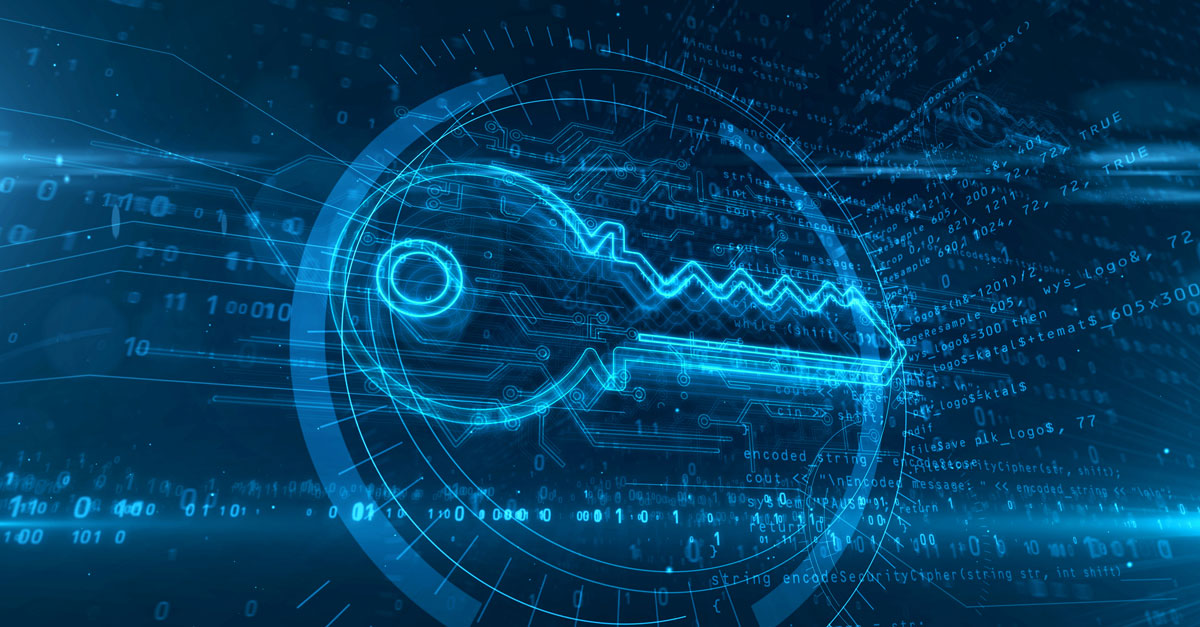
Fiber Distributed Data Interface – FDDI
You’ve heard about it, you’ve wondered about it, and now you’re going to find out the facts about FDDI (which, by the way, is pronounced by saying the four letters or by pronouncing the word, “FIDDY” which rhymes with giddy — and you might feel giddy when you’re done reading about it!)
FDDI is out there. You may be using it on your network, or you may be considering it. In any event, as a network expert, you can’t escape it. Some estimates put the shipment of FDDI network interface cards at over 1 million each year. Currently, the predominant implementation for FDDI networks is in the role of a corporate backbone. The departmental networks in the company attach to the FDDI backbone for high-speed data transfer between buildings, floors in a building, or departments. It’s not unreasonable (albeit expensive) to consider FDDI to the desktop, particularly for high-end engineering workstations. In any event, FDDI essentially serves as a high speed alternative to Ethernet, Token-Ring, or any other LAN inter connectivity solution.
In your study of Ethernet and Token Ring networks you encountered some fundamental concepts which bear review. Each frame of information on the network cable is delimited by a specific bit pattern. Ethernet frames start with a preamble of bits that provides clock synchronization and which ends with a ‘10101011’ bit pattern, called the Starting Delimiter by the IEEE. The frame ends when the clock signal stops. Token Ring uses a specific starting and ending delimiter sequence. So, too, in FDDI, we will find that a specific frame start indication occurs, as does the end-of-frame indication.
Almost as if it were a combination of Ethernet and Token Ring engineering principles, we’ll see that, like Ethernet, the FDDI frame is preceded by a preamble bit sequence to provide clock synchronization but, like Token Ring, the frame uses a specific starting and ending delimiter. Much of FDDI is built on the 802.5 Token Ring standards. If, however, you are an 802.5/Token Ring expert, be prepared to redefine some of the terms you are familiar with. There’s a Claim Token process in FDDI but it doesn’t result in the election of an Active Monitor. Instead, the winner simply generates a new token. All stations are peers with regard to the MAC layer; there isn’t an “Active Monitor / Standby Monitor” hierarchy as there is in an 802.5 Token Ring.
Another difference is in the way frames are removed from the FDDI ring. In 802.5/Token Ring the originating station strips its own frame without evaluating the source address. When an 802.5 station begins transmitting it simultaneously begins stripping. It simply continues to strip bits off the ring until it sees an ending delimiter. Since the token protocol guarantees that only one station is transmitting at a time, the station is guaranteed to strip its own frame and not someone else’s. In FDDI, however, each station evaluates the source address in each frame and, in this way, a station strips its own frame. Interestingly, it isn’t able to begin stripping bits until after it sees the source address (which is several bytes into the frame). Consequently, there are pieces of frames circulating around a FDDI ring which are gradually cleaned off, as we shall see. (Sometimes a special function, called a Scrubber, is used to provide a cleaning of the FDDI ring; other implementations may implement the Gobble Byte function to help clean the ring. It’s an interesting technology, to be sure!)
OK, now you have an idea of where we’re going with our discussion. We’re going to talk about FDDI engineering but you are going to have to keep your engineering mind open. This stuff isn’t 802.5 so be prepared for some surprises!
Media Dependencies
At the bottom of the FDDI discussion lies the physical cable that is used to carry the frames from one station to another. In this regard, a particular implementation of FDDI will have certain characteristics which are dependent on the physical medium being used. For example, there are several types of optical fiber that may carry a light signal generated from a simple Light Emitting Diode (LED) or from a more powerful (ie: burn the retina of your eye if you stare at it) LASER light source. Also, the FDDI frames may be encoded using electrical, instead of optical, signals. In this case the network is sometimes referred to as CDDI (Copper Distributed Data Interface) and sometimes referred as SDDI (Shielded Distributed Data Interface) and sometimes referred to as TPDDI (Twisted Pair Distributed Data Interface). DEC even implemented FDDI frames over coaxial cable.
What gives all these different physical implementations a common denominator is the frame format used by the communicators. A station attached to a CDDI network can move its frame across an FDDI fiber backbone, and onto a DEC coaxial network without changing the structure of the data. At least, that’s the theory! In any event, there is a set of specifications that define the physical medium dependencies and its called the PMD (Physical Medium Dependent) layer of function. “PMD” is pronounced by saying the three letters of the acronym.
A Plethora Of Acronyms – PMD, PHY, MAC, and SMT
PMD was, to some extent, an afterthought. The American National Standards Institute (ANSI) began discussing FDDI in 1982 when a discussion group was established to study high-speed networking. First, the specifications for the physical frames and the rules for accessing the physical medium were established. These were the PHY (pronounced “FYE”) and MAC (pronounced “MACK”) standards. The original PHY standards defined only optical fiber. The PDM standards (‘standards’?? — well, evolving standards from many vendors!) were extensions to PHY to provide for interconnection with lower cost cabling.
So, there are three sets of standards that we’ve introduced. PMD defines the actual signal encoding and cable. PHY defines the physical construction of bits (which, as we’ll see, is somewhat involved – it’s an issue that is moot in Ethernet and 802.5/Token Ring). MAC defines the structure of frames and the rules for accessing the medium. There is another function that was defined years after MAC and PHY and this is called the Station Management function, or SMT (pronounced by saying the three letters of the acronym). SMT is a management function and there is a separate SMT function for PHY and for MAC.
The Paradigm Of MAC and PHY
A new paradigm now begins to evolve in our understanding of the FDDI standards. To understand this model, we’re going to review some fundamentals of layered protocol architecture. I want you to let me lead you through this thought by asking you some questions. These should be obvious questions if you’re up on your OSI (Open Systems Interconnect) model.
“At which layer of the OSI model does a repeater operate?”
“What type of device operates at Layer 3 of the OSI model?”
“At which layer of the OSI model does a bridge operate?”
Too easy? I hope so. I trust that you said:
“A repeater operates at Layer 1, the Physical Layer”
“A router operates at Layer 3, the Network Layer”
“A bridge operates at Layer 2, the Data Link Layer”
(Well, we had to mix up the layers to add some challenge to the questions! It would be too, too easy if we had simply queried about Layer 1, then Layer 2, then Layer 3!)
But this was easy. Let’s expand our review. Do you remember that the IEEE 802.x Data Link Layer is divided into two sub-layers, the LLC (Logical Link Control) and the MAC (Medium Access Control) sub-layers. A user’s workstation has a unique network interface card address called its MAC address. The MAC layer of functionality validates frames and identifies which frames are destined for “this” station. As such, it should be evident that a repeater doesn’t require a MAC function. If a vendor implements a MAC function in a repeater for the purposes of network management, so be it. As far as communications through the repeater are concerned, there is no MAC function in the repeating of frames. This is simply a physical layer process: repeat the bits from input to output.
In the terminology of FDDI we would say that a classic Ethernet or Token-Ring repeater has a physical layer function but no media access control function. We would say that it has a PHY but no MAC. The PHY function is responsible for repeating bits, and in the world of FDDI this is a somewhat involved operation. The MAC function is responsible for copying frames from the ring for delivery to “this” station (the station in which the MAC “lives”). MAC delivers the frame to LLC for demultiplexing to a particular operating system component. That is, LLC provides differentiation between operating system divisions like NetBIOS versus SNA versus Novell NetWare versus TCP/IP, for example.
We’re going to talk about stations that have a PHY and no MAC. Some stations have more than one MAC (because they’re connected to more than one ring — they have more than one PHY). In other cases a station may have multiple PHYs and only one MAC, or some PHYs may not have a MAC at all. There’s a plethora of combinations of connectivity with PHY and MAC — you’ve got everything except “MAC the Knife” and a “Big MAC attack” (..that’s humor..)
Connecting Stations To Each Other
The most straightforward connection between stations is to arrange them in a circle and plug fiber-optic cable from one to the next. The ring would look like this picture.
Each adapter card in this scenario would require two separate optical ports; one for transmitting the light signal and one for receiving the signal. The card would be wired as shown in the following picture.
The interface connector port on the adapter card has two fiber optic cables attached to it. One comes in from the Upstream Neighbor supplying a received light source. The other transmits a repeated copy of the incoming signal to the Downstream Neighbor. There is one fundamental problem with this design theme. If one station were to fail (or, simply, be powered down!) the whole ring stops operating. This, obviously, can’t happen. This situation points up one of the fundamental functions of PHY – to protect the ring in the event of a failure or power-down condition.
To provide PHY with a way to protect the ring from a failure, a second ring is added to the design. Each adapter is now provided with a second port which attaches to the second ring. The interconnection between two adapters has a pair of fiber optic cables (inside a single cable sheath — it looks like one cable but it has two separate fiber optic cables inside it.) One fiber optic link implements a Primary Ring (also called the Main Ring or Main Ring Trunk) and the second one implements a Secondary Ring (sometimes called the Secondary Ring Trunk). The secondary ring provides a backup path in the event that PHY detects a problem as needs to wrap the ring around the fault. Here’s how we’re going to implement the ring.
The top port on each adapter in our picture is called an ‘A’ port. The bottom port is the ‘B’ port. The picture shows that each station has its A Port connected to the B Port on the next station. This forms a ring: A-to-B, A-to-B, and so on. But, notice that each connection involves TWO pieces of fiber optic cable. This makes each connection into a BI-DIRECTIONAL link. One cable carries data in one direction, and the other is able to carry data back. So, while the transmitter on the A Port is connected to the receiver on the B Port, the transmitter on the B port is connected to the receiver on the A Port. A more representative picture of the configuration may be realized by the following logical diagram of a FDDI ring.
Study the picture. Do you see that each A port is connected to a B port. Notice further that each port has two fiber optic connections. These two pieces of fiber optic cable have a very small physical diameter and the two pieces run next to each other inside a single sheath. They are attached to the port with a special connector that guarantees the proper alignment of the cables. The connector has a tab on it so that an A port can only connect to a B port (that is, assuming that the cable connector is properly configured). It is the configuration that is described as a pair of Counter-Rotating Rings (because one ring transmits data in a clockwise direction while the other ring transmits data in a counter-clockwise direction.)
We can summarize the operation of the A and B ports as follows:
- PORT A: The receiver side of the port connects to the primary ring. The transmitter side of the port connects to the secondary ring.
- PORT B: The receiver side of the port connects to the secondary ring. The transmitter side of the port connects to the primary ring.
Study the picture above to see how Port A and B are connected as described. When you are troubleshooting a FDDI implementation you are going to have to remember the roles of an A and B port when you interconnect equipment.
The devices that are attached in this manner are referred to as being Dual Attachment Stations. The acronym “DAS” (pronounced as a word that rhymes with “mass”) refers to a dual attachment station. A DAS, therefore, has an A and B port an is connected to two separate fiber optic rings. In this configuration we refer to the DAS as being Rooted, that is, connected to the dual rings that make up the FDDI implementation. (Now you can tell your friends that you know what a “rooted DAS’ does!)
Wrapping A Ring To Compensate For A Fault
Let’s see how the PHY in a rooted DAS handles a fault in the ring. We’ll introduce some bad problem into the ring; perhaps a cable break. The two PHYs that see the problem will enter the wrap state. They change the internal configuration of their A and B ports to produce the following configuration.
You see that the fault has been isolated and all three stations continue to operate normally. The secondary ring (which used to be idle) is now brought into play to provide the backup path for communications. We say, “The ring is wrapped”.



